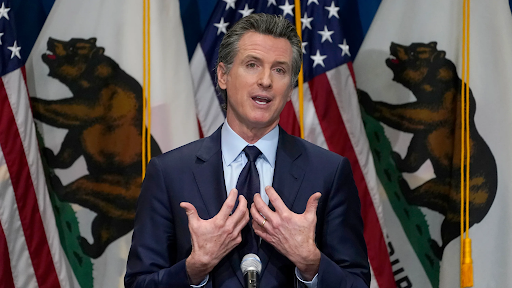Why the California Recall Elections Happened

Image courtesy of USA Today
By Noelia Veras
California held its gubernatorial recall election on Tuesday, September 14, and it is projected by a sizable margin that Governor Gavin Newsom will remain in office. An estimated 92 percent of ballots have been counted, and a total of 63 percent of those have been votes for Newsom to remain in office. Newsom was elected as governor of California in 2018, making January 2023 the natural end of his term.
The only time that a recall in California has successfully removed a governor from office was in 2003 when Governor Gray Davis was voted out by 55.4 percent of the votes, and famous actor Arnold Schwarzenegger replaced him. This is the second time a recall vote has qualified for the ballot.
According to Politico, in order for recall elections to take place, a recall petition must acquire enough signatures to amount to 12 percent of the prior gubernatorial election turnout. In this case, that meant getting 1.45 million signatures. With a total of 1.65 million signatures, the recall election was set into motion. Recall election attempts in California are easy to enact compared to other states, and every governor since 1960 has faced at least one attempt.
This recall election was spearheaded by conservative Californians who were opposed to the liberal state government. The movement for a recall election was mainly motivated by Newsom’s handling of the pandemic, especially after videos and pictures were released of Newsom breaking his own rules for private indoor gatherings in November of 2020. Many conservative Californians have also criticized Newsom for excessive restrictions that negatively impacted small businesses, especially service businesses, throughout the pandemic. Some critics also say that the governor was too slow to reopen industries last spring.
Orrin Heatlie is one of the faces of the effort to hold recall elections to get Newsom out of office. Heatlie is a 52-year-old retired sheriff’s sergeant. Most of the individuals and groups supporting the recall election were conservatives that were also hoping to get Democrats out of the state’s office, many of which are loyal supporters of former President Donald Trump. While the handling of the coronavirus was a very significant factor for many people to vote yes for the recall election, other issues arose for, predominantly, conservative voters. In a letter to the editor of Bakersfield, Gregory E. Laskowski enumerated 10 reasons why Newsom must be removed from office.
“Governor Newsom has implemented laws that are detrimental to the citizens of this state and our way of life,” Laskwoski wrote as his first point for removing Newsom from office and enacting a recall election in California.
The recall election ballot contained two questions: should the governor be recalled? And if so, who should be the new governor? In order for the recall to go through to elections, more than 50 percent of voters have to vote yes; if this happens, then the challenger with the most votes becomes governor. If the first question has more than 50 percent votes that say no, the second question is null.
Over 40 people ran as alternative candidates, most of whom were Republicans. Republican candidate Larry Elder was the front-runner of the recall election and would have been California’s new governor had Newsom been voted out of office. Other notable individuals running were Republican candidate and celebrity Caitlyn Jenner, who received around 1 percent of the vote, and Democrat candidate Kevin Paffrath, a 29-year-old Youtuber who was runner-up to Elder.
The recall election was certainly controversial for many Californians. For those in more conservative areas like Riverside County, a larger percentage of people supported the recall election and the margin for ousting Newsom was quite thin. Sue Vonidstein, a 61-year-old retired business owner from Orange County, supported the recall and believed that Newsom would be voted out of office.
“We’ve gotten a governor out of office before — we can do it again, and we should do it again,” Vonidstein said, according to The New York Times.
42-year-old Candice Carvalho also from Orange County disapproved of the recall election.
“It was a waste of money and completely unnecessary. And I’m a little shocked we’re focusing on this now,” Carvalho said.
According to SF Gate, the state had already spent $276 million as of Election Day; the failed recall election of Newsom could actually end up costing taxpayers even more than that.
“The budget committee and the state Assembly acknowledges that it can go higher,” California Secretary of State Shirley Weber said. “We could see $300 million or more spent on this election.”
The Public Policy Institute of California offers reform ideas like changing the minimum signature requirements for becoming a replacement candidate, adding the lieutenant governor to the replacement ballot, and having recalls be decided in the next regularly scheduled general election. Since a definite basis of a recall election is not required, the PPIC highlights weaknesses in the recall process and offers these reform ideas rather than entirely eliminating the concept of a recall election.
Overall, this year’s recall elections in California were controversial and divisive, calling into question the very necessity of recall elections in general and encouraging outlets like the PPIC to suggest reforms in the process at large.







